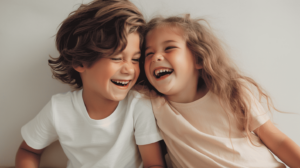
Sibling Relationships – Tips for Encouraging Bonding
Discover effective tips for nurturing sibling relationships and fostering a strong bond between siblings. Create lasting connections and promote harmony.
Art is a wonderful way to help children express themselves, tap into their imaginative minds, and discover new talents. It not only provides a fun and interesting diversion but also plays a vital role in child development across several contexts. Engaging toddlers and their siblings in art activities can form the cornerstone of an enriching learning journey, paving the way for their physical, cognitive, and socio-emotional growth. As we delve into the fascinating world of toddler and sibling art activities, we’ll understand the power art holds for children and how it can be both a creative escape and an educational tool. Buckle up for an inspired and colorful journey toward exploring creativity through art!
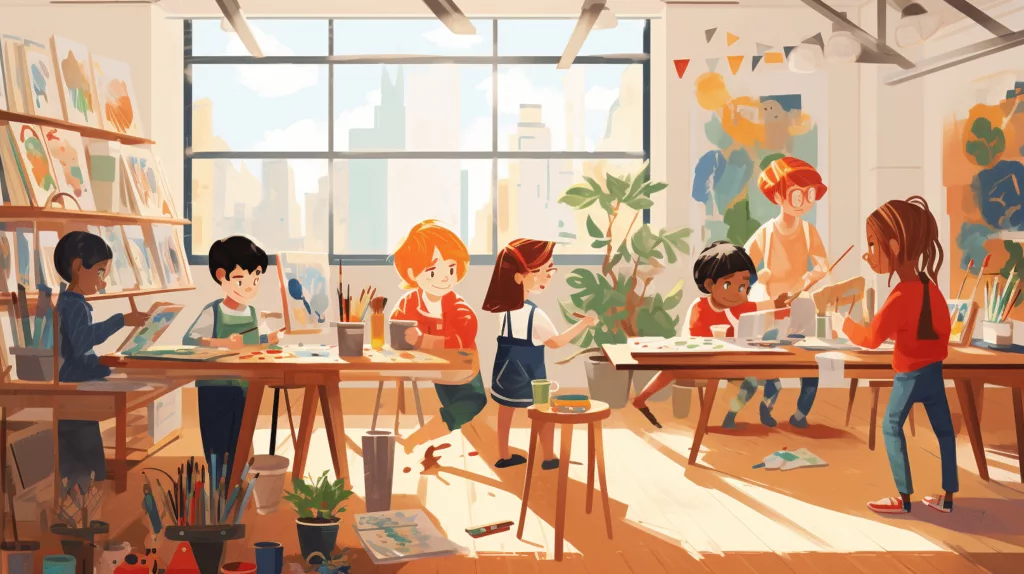
There’s an unmissable charm in the way a child’s eyes light up when handed a crayon for the first time. With each stroke and scribble, they embark on a transformative journey of self-expression and discovery. Beyond the simple joy of creation, however, lies an arena with profound implications for child development. Namely, the world of art. Art isn’t merely a fun, educational tool for children, but a stimulus that ignites a multitude of developmental advantages. In exploring art, children boost their confidence and self-esteem, process emotions, and enhance neurological development.
Perhaps the most apparent benefit of engaging children in art is the enhancement of their fine motor skills. As they hold paintbrushes, maneuver clay, or direct a pencil, they exercise control over the small movements of their hands and fingers. This delicate coordination prepares them for tasks like writing, typing, and other activities requiring precision.
Art also sharpens a child’s visual-spatial processing capabilities. When they choose colors, shapes, and sizes, they’re not just making random decisions. They’re building their understanding of the world and its aesthetics, which helps them judge distances, comprehend three-dimensional shapes, and navigate their environment.
Through art, children encounter a series of ‘problems’ – like deciding where to place an object in a drawing, or how to mix colors to attain a particular shade. Finding solutions to such creative challenges foster their problem-solving skills, inculcating an innovative mindset and an ability to approach situations from unconventional angles.
Art, to a child, isn’t confined to the canvas or paper but stretches into their imagination, sparking heightened cognitive development. It opens avenues where they can experiment and make connections, thus exercising their minds and boosting brain functionality.
You might be surprised to discover the connection between art and language development. When children discuss their artwork or describe what they are seeing, they learn new words, concepts, and expressions. It’s a beautiful fusion of linguistic growth and artistic exploration.
Lastly, one can’t overlook the vital role art plays as a safe platform for self-expression. For children who may not have the vocabulary to articulate their feelings, art provides an outlet to express, process, and understand their emotions. It’s a non-verbal language, enabling the young ones to convey their thoughts and feelings, affirming the importance of their emotional existence.
The power of art in child development is indeed immense. By integrating art into a child’s routine, parents and educators can shape thriving, imaginative, and emotionally resilient individuals who are equipped to navigate the world with creativity and confidence.
Art activities are a fantastic way of bonding with your children, feeding their innate creativity and developing a host of fine motor and cognitive skills. As your little ones embark on their creative journeys, help them explore the enchanting world of colors, textures, and shapes with these delightful art activities, ideal for toddlers and siblings. The joy they’ll derive from these experiences not solely lies in the masterpieces they create, but rather the process of bringing their imaginative thoughts to life.
One of the simplest yet most rewarding art activities is making prints. From using various house-hold objects to their tiny hands and feet, kids can have a blast while creating their unique print-based artwork.
Go beyond the traditional paintbrush. Encourage your children to explore the magic of painting with unconventional objects!
The great outdoors is a boundless source of inspiration for your littlies. With these nature-oriented art activities, you can cultivate in them a deep appreciation for their natural surroundings and the beauty it holds.
Art is a universal language of expression. These activities will not only help your children express themselves but also allow them to understand, appreciate and interact with the world around them in visually and tactually fascinating ways. So why wait? Let the creativity flow and watch as your budding artists produce remarkable masterpieces!
Delving into the world of artistic pursuits reveals more than just the joys of creative expression. Art activities play a crucial role in our social and emotional development. Often not merely a pastime, art can serve as a powerful tool in shaping and nourishing our well-being. From stress relief and emotional expression to building self-esteem, promoting creativity, and improving mood—the influence of art on our socio-emotional health is substantial.
In the hustle and bustle of modern life, stress has become an inescapable reality. A blank canvas, a musical instrument, or a pottery wheel can serve as an oasis of serenity in our hectic schedules. Art activities hold a unique power to transport us to a world where our tasks and deadlines aren’t dictating our every move.
Art can serve the role of an unjudged confidant, an avenue for us to vent suppressed emotions. It can help articulate complex thoughts and feelings that might be challenging to express verbally.
Engaging in artistic activities cultivates a sense of accomplishment and pride. Over time, the act of creating and sharing our art helps boost self-esteem.
Art activities nudge us out of our comfort zones and urge us to explore uncharted territories of creativity. Be it painting, music, or writing—these artistic disciplines stimulate our imagination and kindle creative thinking.
Art does more than simply delight our senses. It triggers an array of positive emotions and uplifts our mood in the process.
Art activities stand as powerful and essential tools that contribute significantly to our socio-emotional health. They offer a broad spectrum of benefits, from fostering creativity and emotional expression to reducing stress, boosting self-esteem, and improving mood. Hence, investing your time and effort in art triggers a ripple effect, ultimately enriching and brightening aspects of life beyond one’s creative pursuits.
In our fast-paced society, equipping children with the necessary skills to navigate their academic journey and future professions is paramount. While math and science are undoubtedly important, there’s a profound, often overlooked value in the role of art activities. They enhance children’s cognitive abilities, promote creativity, boost critical thinking, and improve communication and problem-solving skills. The enchanting world of art can open doors to countless possibilities, expanding our children’s horizons and preparing them for the future.
It’s commonly assumed that academic success relies primarily on the mastery of certain subject areas, such as mathematics and reading. Nevertheless, research has shown the positive impact of art activities like painting, drawing, and sculpting on a child’s academic progress. It enhances their visual-spatial ability, leading to improved understanding and application of concepts. Furthermore, art activities stimulate pathways in the brain that help children learn essential academic skills such as writing, reading, and mathematical calculations.
Art activities are not merely about creating pretty pictures; they’re about encouraging imagination and creativity, fostering an open mind, and challenging conventions. When a child is engaged in an art activity, they’re free to explore their imagination, to experiment with mediums and techniques, to make mistakes, and to find unique solutions. This process cultivates critical thinking skills, which are invaluable in our rapidly changing world.
Arts, in all its forms, is a language – it allows children to express thoughts and emotions they might find hard to articulate verbally. Engaging in art activities can help children improve their ability to communicate their ideas effectively, enhancing their listening and observation skills. It’s an unparalleled way of self-expression, breaking down barriers, allowing for nuanced conversations, and cultivating a sense of empathy.
Devising a compelling piece of artwork often requires overcoming obstacles, making adjustments along the way, and finding appropriate solutions. These problem-solving abilities honed through art activities can translate to other aspects of life, preparing children for complex tasks and situations they’ll encounter later. They learn that challenges can foster growth and that creative solutions can be found even when things seem complicated.
Art activities go beyond aesthetics and entertainment, contributing significantly to children’s cognitive and communicative development. So, let’s incorporate art into the daily lives of our children, and you might be surprised by the extraordinary benefits it brings.
Unleashing the magic of colors and illustrations, art unlocks a universe of creativity and adventure for kids. More than merely splashing paint on a canvas, art opens up avenues for physical development and invigorates their sensory exploration. It establishes a connection between the physical and the cognitive, providing an enriching, invigorating journey for little artists. Here, we’ll walk through how art activities enhance children’s motor skills, improve their hand-eye coordination, and promote sensory exploration.
Art isn’t merely an aesthetic endeavor; it’s an exercise that hones kids’ motor skills. The motions involved in creating a piece of art, such as holding a paintbrush or scribbling with a crayon, are essential for improving children’s fine motor skills. Developing these skills at a young age is beneficial not just in artistry but in everyday tasks such as eating, writing, and buttoning clothes.
Let’s not forget about gross motor skills. Large-scale art projects, such as murals or sculptures, require children to utilize broader arm movements, promoting strength and coordination in their arms and upper bodies. Hence, art, in all its forms, offers a wholesome way to improve children’s fine and gross motor skills.
Hand-eye coordination is an essential skill that children develop at an early age. Art can play a pivotal role in this development. When a child draws shapes, cuts patterns, or threads beads, they are honing their hand-eye coordination. Precision, focus, and concentration come into play as their little hands and fluttering eyes team up to create something mesmerizing. Art isn’t just about crafting beautiful creations but also about developing essential life skills.
Art provides a kaleidoscope of colors, textures, and materials for children to explore and manipulate. It’s an open playground for their senses. From the feel of squishy clay to the sight of a rainbow of paint colors, each artistic experience stimulates their senses. Allowing children to interact with various art materials not only promotes sensory exploration but also fosters a deeper understanding of the world around them. With each stroke of color and each mold of clay, they’re learning, exploring, and progressing.
It’s clear that art offers far more than meets the eye. While it’s a platform for children to express their creativity and illustrate their perceptions, it’s also an instrumental tool in fostering their physical development and sensory exploration. So, the next time your child picks up a crayon or paintbrush, remember: they’re not just creating art, they’re building skills and understanding their world.
Art is more than just a source of entertainment or a way to incite imagination in children. It can also act as a potent tool for family bonding. If you’ve been looking for creative methods to connect deeper with your children or siblings, diving into art projects might be just the ticket.
Art, in its innate form, encourages expression – a key aspect often missed in routine conversation. By engaging in art projects together, families can foster a prolific dialog of thoughts and feelings. It can unlock new paths for non-verbal communication, fostering a rich environment of understanding and empathy.
Additionally, art is universal, and everyone can participate, regardless of age or artistic prowess. This ensures nobody feels left out and everyone can contribute to the creative process. And while everyone bonds over art, children also refine their motor skills, stimulate creativity, and learn the importance of patience and focus.
Let’s take a glance at how shared art activities can further augment family bonding:
Art, therefore, becomes an ideal medium to bond and communicate within a family. It offers a relaxed, enjoyable platform to exchange thoughts, embrace each other’s differences, and celebrate shared triumphs. By integrating art into your family routine, you cultivate an environment of unity, understanding, and unconditional love, making every day a little more colourful!
“Every artist was first an amateur.” – Ralph Waldo Emerson
This quote sums up perfectly that expertise isn’t a necessity when it comes to enjoying art. So why wait? Grab your paints, crayons, or clay, and start creating some shared family memories that will last a lifetime!
Indeed, from enhancing cognitive abilities to expressive communication, art activities are an essential part of a child’s growth and create treasured family moments. It’s not only about creating a masterpiece but more about the meaningful interaction and learning that occur during the process. Our journey at Lovelycheeks is to support you, the new parents, in unlocking your child’s potential and paving a strong foundation for their future.
Whatever journey you and your little artists choose to undertake, remember the beautiful mess will turn into memories etched in their hearts and minds. For more tips and advice, check out our parents’ guides and resources to help you on this incredible journey. Here’s to more mess, laughter, and family love with art and creativity!
Remember, at the end of the day, what matters isn’t the final product, but the love, laughter, and creative exploration along the way. Let’s create more, with the open minds and unfettered imaginations of our precious young ones. With Lovelycheeks by your side, guiding you through your parenting journey, we believe in a creative and vibrant future for our children. After all, the etchings of a child’s imagination today can lead to a world of colorful possibility tomorrow.
Some creative art activities for toddlers and siblings include finger painting, collages, sensory play with colored rice or playdough, nature-inspired crafts, and making homemade musical instruments.
Art is important for toddlers and siblings as it helps develop their fine motor skills, hand-eye coordination, self-expression, creativity, imagination, and cognitive abilities. It also provides opportunities for bonding and cooperation.
Art activities support learning in toddlers and siblings by encouraging problem-solving, decision-making, color recognition, shape recognition, pattern recognition, language development through storytelling, and exploration of different textures and materials.
Some safety tips for art activities with toddlers and siblings include using non-toxic art supplies, ensuring proper ventilation in the art area, closely supervising younger children with small materials, and avoiding hazardous materials such as sharp objects or chemicals.
Parents can encourage creativity in toddlers and siblings through art activities by providing open-ended materials, allowing freedom of expression, displaying and praising their artwork, encouraging experimentation, and participating in the art activities together.
Be the first to See our Posts and latest Guides, and Special Offers like Lovelycheeks on Facebook or follow us on Pinterest!

Discover effective tips for nurturing sibling relationships and fostering a strong bond between siblings. Create lasting connections and promote harmony.
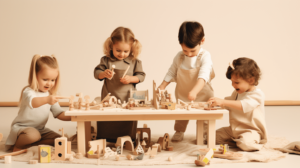
Discover creative and interactive activities for toddlers and siblings to enjoy together. Keep the little ones entertained with fun and engaging ideas.
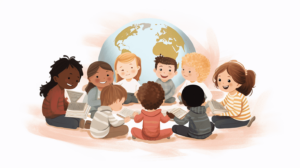
Discover fun and interactive activities for toddlers and siblings during storytime. Engage their imagination and create lasting memories with these ideas.
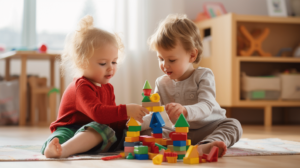
Discover fun and engaging activities to help enhance your toddler’s language skills and foster communication between siblings. Start teaching language skills early.